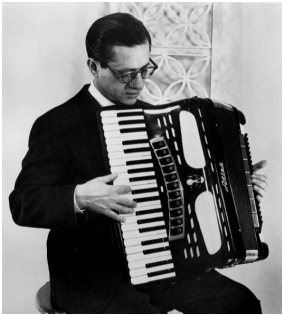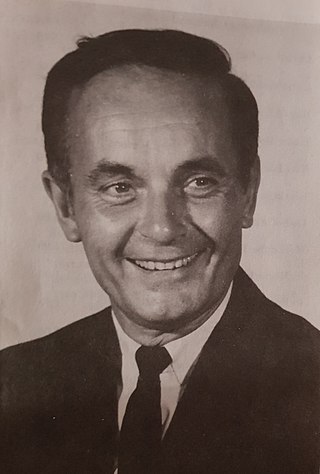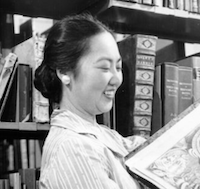A concerto is, from the late Baroque era, mostly understood as an instrumental composition, written for one or more soloists accompanied by an orchestra or other ensemble. The typical three-movement structure, a slow movement preceded and followed by fast movements, became a standard from the early 18th century.
Julius Baker was one of the foremost American orchestral flute players. During the course of five decades he concertized with several of America's premier orchestral ensembles including the Chicago Symphony and the New York Philharmonic Orchestra.
A rhapsody in music is a one-movement work that is episodic yet integrated, free-flowing in structure, featuring a range of highly contrasted moods, colour, and tonality. An air of spontaneous inspiration and a sense of improvisation make it freer in form than a set of variations.

Music is often played at wedding celebrations, including during the ceremony and at festivities before or after the event. The music can be performed live by instrumentalists or vocalists or may use pre-recorded songs, depending on the format of the event, traditions associated with the prevailing culture and the wishes of the couple being married.

John Serry Sr. was an American concert accordionist, arranger, composer, organist, and educator. He performed on the CBS Radio and Television networks and contributed to Voice of America's cultural diplomacy initiatives during the Golden Age of Radio. He also concertized on the accordion as a member of several orchestras and jazz ensembles for nearly forty years between the 1930s and 1960s.

Alexander Emil Caiola was an American guitarist, composer and arranger, who spanned a variety of music genres including jazz, country, rock, and pop. He recorded over fifty albums and worked with some of the biggest names in music during the 20th century, including Elvis Presley, Ray Conniff, Ferrante & Teicher, Frank Sinatra, Percy Faith, Buddy Holly, Mitch Miller, and Tony Bennett.

Squeeze Play is an Ultra High Fidelity monaural phonographic album which was released on the Dot Records label in 1956 (DLP-3024) featuring John Serry Sr. It includes an original composition by Serry, classical works, and popular music of the era. Ben Selvin serves as the musical director/producer for the album. The works were arranged by Serry and performed with his ensemble featuring two accordions, piano, guitar, bass, drum, vibes, and marimba.

RCA Thesaurus, a brand owned by RCA Victor, was a supplier of electrical transcriptions. It enjoyed a long history of producing electrical transcriptions of music for radio broadcasting which dated back to NBC's Radio Recording Division.

Concerto for Free Bass Accordion was written for the solo free-bass system accordion by John Serry Sr. in 1964 and was revised in 1966. A transcription for solo piano was completed in 1995 and revised in 2002. Written in the classical music concerto form, it illustrates the wide-ranging orchestral qualities of the free-bass accordion and underscores the suitability of the instrument for performances as a robust solo instrument on the classical concert stage.

"Nobody's Sweetheart", also known as "Nobody's Sweetheart Now" and "You're Nobody's Sweetheart Now", is a popular song, written in 1924, with music by Billy Meyers and Elmer Schoebel, and lyrics by Gus Kahn and Ernie Erdman. The song is a jazz and pop standard.
The Time of the Cuckoo is a play by Arthur Laurents. It focuses on the bittersweet romance between Leona Samish, a single American executive secretary vacationing in Europe and Renato Di Rossi, a shopkeeper she meets in Venice. Di Rossi, trapped in a loveless marriage, relentlessly pursues Leona, who initially is shocked by the thought of an illicit affair but eventually succumbs to the Italian's charms.

"Oh, You Beautiful Doll" is a ragtime love song published in 1911 with words by Seymour Brown and music by Nat D. Ayer. The song was one of the first with a twelve-bar opening.

A free-bass system is a system of left-hand bass buttons on an accordion, arranged to give the performer greater ability to play melodies with the left-hand and form one's own chords. The left-hand buttonboard consists of single-note buttons with a range of three octaves or more, in contrast to the standard Stradella bass system, which offers a shorter range of single bass notes, plus preset major, minor, dominant seventh, and diminished chord buttons. The term "free-bass system" refers to various left-hand manual systems that provide this functionality: The Stradella system does not have buttons for different octaves of the bass notes, which limits the types of melodies and basslines that can be performed with the left hand.
The accordion is in a wide variety of musical genres, mainly in traditional and popular music. In some regions, such as in Europe and North America, it has become mainly restricted to traditional, folk and ethnic music. Nonetheless, the button accordion (melodeon) and the piano accordion are widely taught and played in Ireland, and have remained a steady fixture within Irish traditional music, both in Ireland and abroad, particularly in the United States and Great Britain. Numerous virtuoso Irish accordion players have recorded many albums over the past century or so; the earliest Irish music records were made in the 1920s, in New York City, by fiddler and Sligo immigrant Michael Coleman, widely considered to have paved the way for other traditional musicians to record themselves. Accordions are also played within other Celtic styles, as well as in English traditional music, American traditional music, polka, Galician folk music, and Eastern European folk music.
"If You Knew Susie" is the title of a popular song written by Buddy DeSylva and Joseph Meyer. It was published by Shapiro, Bernstein & Co. in 1925. The sheet music included ukulele tabs by Richard Konter. In the largely comic song, a man sings that he knows a certain woman named Susie to be much wilder and more passionate than most people realize.
John Serry Jr. is an American jazz pianist and composer, as well as a composer of contemporary classical music works that feature percussion, on which he also doubles. He is a son of the accordionist and composer John Serry. His debut solo album was 'Exhibition', for which he received a Grammy Nomination for his composition, 'Sabotage'.
"La Cinquantaine" is a piece of music which was composed by Jean Gabriel-Marie in 1887.
An accordion concerto is a solo concerto for solo accordion and symphony orchestra or chamber orchestra.

Paul John Sifler (born Pavel Gerjol, December 31, 1911, Ljubljana, Slovenia – May 20, 2001, Hollywood, California, was a Slovenian composer and conductor.

Ruth Taiko Watanabe was a Japanese-American music librarian. For 38 years (1946-1984), she ran the Sibley Music Library at the Eastman School of Music at the University of Rochester.











